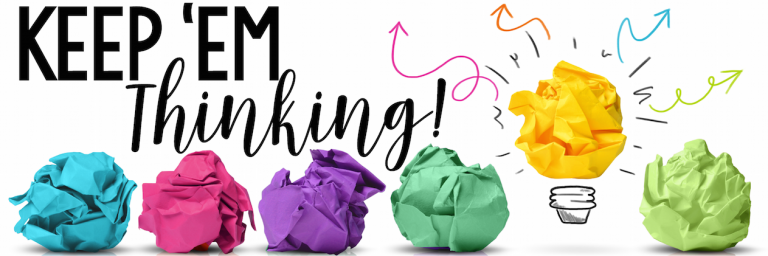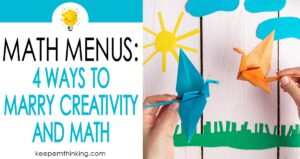Passion Projects were a staple in my gifted enrichment classroom in the 1970s. Back in those days, we called them Type III enrichment activities (Renzulli Enrichment Model) or Independent Studies. But thankfully, things changed as general education has embraced the concepts of thinking skills, creative production, and talent development. Today we see these activities implemented in all types of classrooms through Genius Hour, Passion Projects, and Maker Spaces. Whatever title you choose to give them, Passion Projects promote student-centered investigations. They are examples of personalized learning and differentiation at their finest.
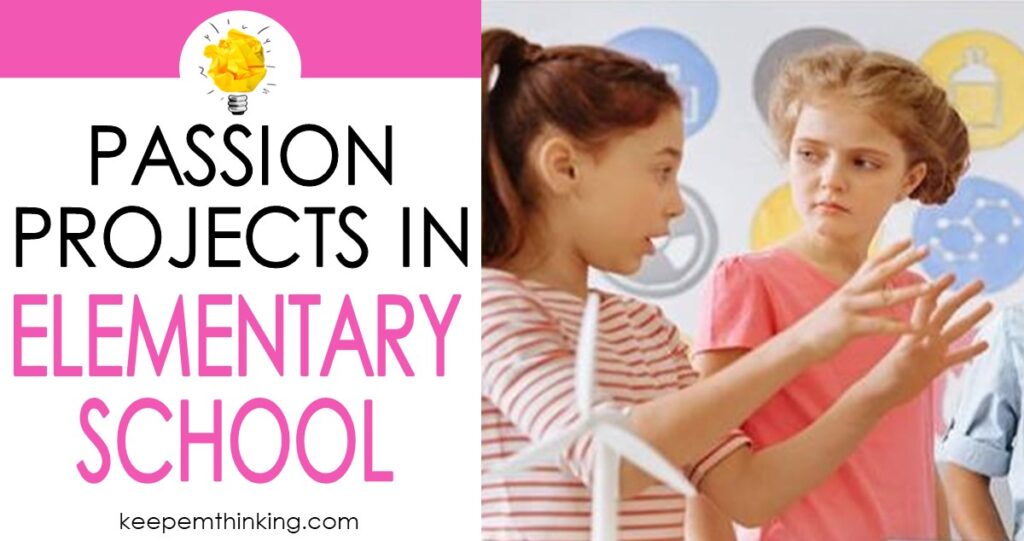
Why Use Passion Projects?
These projects are one of the best ways to keep students engaged and excited about learning. A bonus is that they address many of your students’ social-emotional needs. Passion Projects have an immediate buy-in from the students because they are centered on a topic each student is very interested in. They complement the core curriculum because they integrate reading comprehension skills, note-taking skills, and writing skills. More than just learning research skills, Passion Projects promote creativity and innovative thinking. Students develop self-awareness, self-management, and responsible decision making. They are learning essential life skills such as planning, decision making, persistence through overcoming obstacles, problem-solving, time management, and personal reflection.
In this blog post, I am going to give you all the steps I use when leading my students through the Passion Project process for the very first time. You will be able to shorten the steps for later projects. Be forewarned! This blog post is long, but if you read it in its entirety, you will know everything you need to know to successfully implement Passion Projects in your classroom.
If you want to learn about using Passion Projects through Distance Learning, you can check out that blog post here.
Precisely What Are Passion Projects?

A Passion Project is an investigative activity. Rather than being a teacher-centered curriculum, it is a student-centered curriculum. Students identify an area of interest. Next, they develop a burning question related to that topic. The burning question is a question they want to find the answer to, but it is a little more complicated. It is what we like to call a non-Google-able question. You can’t find the answer through a simple Internet search.
Students use a variety of sources to research their burning question. Next, they create a product to present to an audience of their choice. The final, often overlooked stage of the process is reflection. During reflection, students think about what went well, what they would change, and what they learned.
My favorite thing about Passion Projects is that throughout the entire process, students are in charge of their learning. They get to experience the joy of discovery and learning new things. The role of the teacher changes as they become coaches, facilitators, procurers of resources, editors, and cheerleaders. Teachers coach and encourage students when they get stuck or experience failure, which some inevitably will.
How Can I Fit Passion Projects Into My Schedule?
I usually set aside one hour per week for students to work on their Passion Projects. We call this time Genius Hour because it is modeled after the 20% Time model used by many corporations.
Setting the Stage for Passion Projects
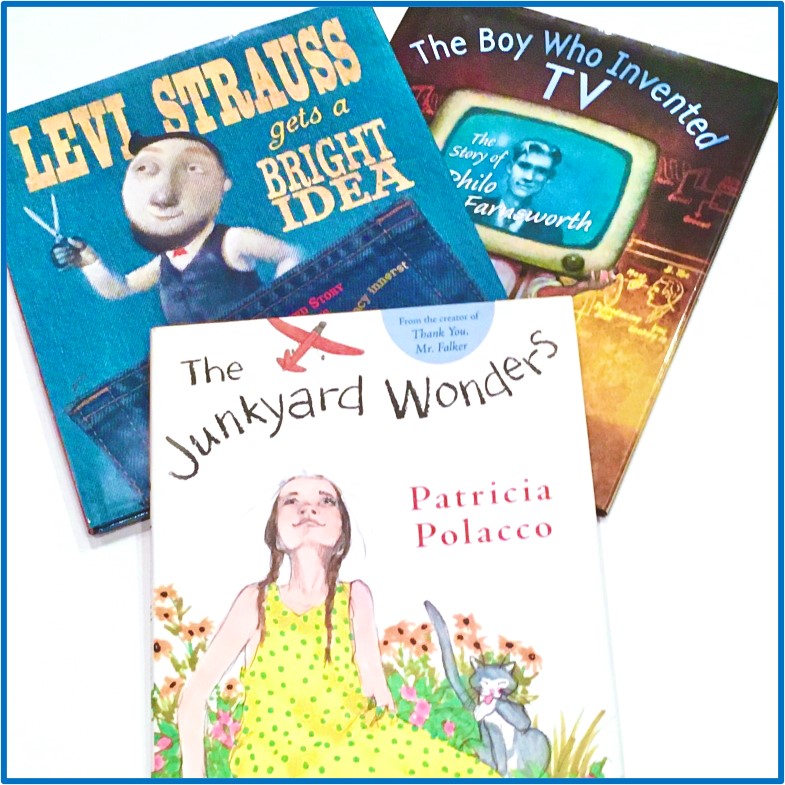
Before I even begin to introduce Passion Projects to my students, I like to share some picture books about real people who have followed their passions to achieve incredible things. There are tons of picture books out there you can use, but these are just three I have used. My favorite is The Junkyard Wonders by Patricia Polacco.
This picture book is the true story of Patricia and some of her classmates in a class for special needs students. Others have dubbed the class The Junkyard Wonders. With the help of a forward-thinking teacher, these students take a classmate’s passion for rockets and space, and together they design, build, and launch a rocket.
At the end of the book, Patricia writes an afternote and lets you know all the characters are real people. She tells how the members of the group, whom everyone considered “junk,” followed their passion and went on to do incredible things. One becomes an aeronautical engineer for NASA, another the artistic director for a ballet company, a third went on to become a textile designer. Patricia herself became a best-selling children’s book author.
Next, we talk about the difference between a passion and a hobby. Passions are things that are all-consuming while hobbies are things you tend to do for fun. Finally, I share examples of everyday kids who used their passion to achieve great things and make a difference.
Identifying Areas of Interest or Passion
In this stage, students examine their interests and categorize them. Next, they narrow their list down to three interest areas. I do this because so many of my students think they are interested in and curious about everything!
I use the website Wonderopolis® with students who have difficulty identifying areas of interest.
Creating Burning Questions For Your Passion Project

I think creating burning or non-Google-able questions may be one of the most challenging stages of the Passion Project process. So many of the kids want to develop a question that could quickly be answered by a Google™ search and then just begin their project. To help students create their burning questions, you need to give some examples. Some questions I have had students create are:
- How can people earn a living by playing video games?
- How have computers changed our lives?
- How do you become a professional football player?
- How can you build a robot?
- How can you make sweet desserts that aren’t fattening?
If you notice, most of the questions begin with the word “how.” Questions that begin with “what” need to say things like What are some ways… What are some things we can do to… etc. Notice there is no one right answer. It’s fun to have a “Wonder Wall” as a bulletin board so you can display each student’s burning question.
Selecting Resources to Research For Your Passion Project

In this stage, during Genius Hour, students think of all the different sources they can use for information to help them answer their burning question. Of course, there are the usual resources such as books, magazines, newspaper articles, the Internet, etc. But I like for them to consider a variety of sources. Here’s a list of some great ones I have found.
- Wonderopolis
- Library Spot this free virtual library center has links to everything your kids might need
- infoplease
- National Geographic Kids
- School Tube
- Project Gutenberg an excellent source for primary documents and out of print books – all free
- Fact Monster
- Your local PBS Learning website for teachers has tons of stuff for kids
- Interviews with experts through ZOOM or email
Selecting the Product to Create
One of the most critical steps in the Passion Project process is selecting a product. The students will need to consider their burning question, their intended audience, time, and the materials they will need to create a product.
For example, if a student’s burning question is, How did dinosaurs become extinct?, a brochure or a skit might not be the best product to allow him to present his research. It might be better if he made a PowerPoint presentation, a project board, or a magazine article. Students must also think about their audience when selecting a product to create. If they wish to write a magazine article about the extinction of dinosaurs, what grades would find it interesting? Would that be an appropriate product for kindergarten or first grade?
Another factor when selecting your product is time and materials. A video will take a lot of time, and you might not have the equipment you need readily available, but you might have the resources to create a picture book.
With so many factors to consider, students should think carefully about the product they wish to produce. I have had many occasions when students were overly ambitious in their choice of a product. Consequently, they became very frustrated and overwhelmed during the product creation stage.
Submitting the Project Proposal
I like to have my students complete a Passion Project proposal form. In their proposal, I ask for the following five things:
- Name of the project
- The burning question you want to answer
- Resources you will use to answer your question
- Your audience
- Your product
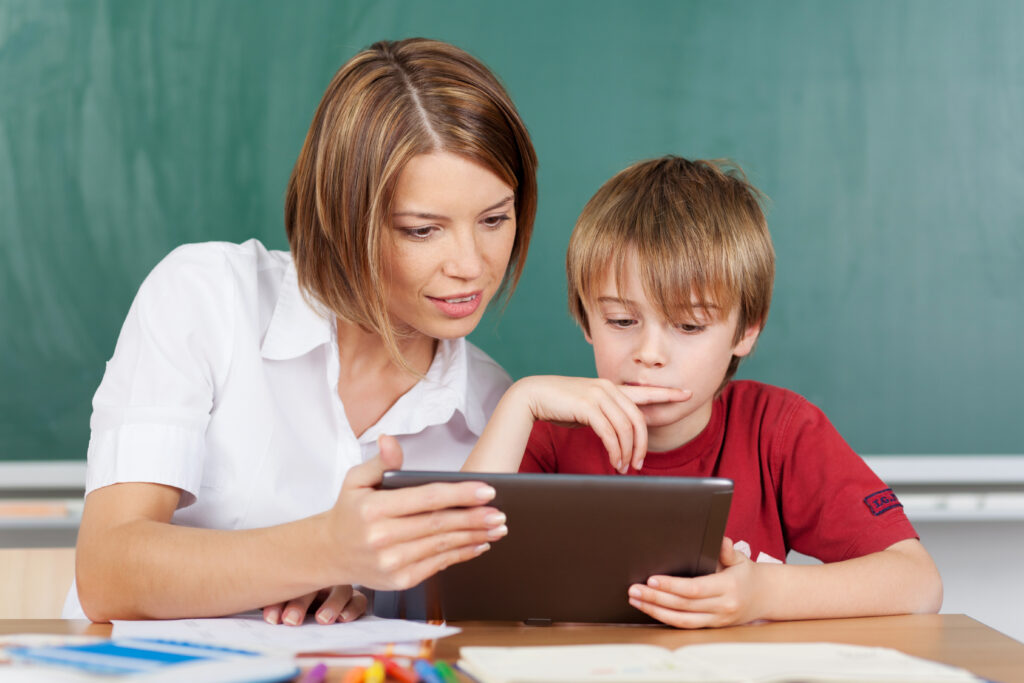
During Genius Hour, I meet with students individually to discuss their proposals. I sometimes offer suggestions, and we might modify the proposal. We both sign off on the proposal, and the real work begins. It may sound like I spend a lot of time upfront before the students start their research. However, my experience has been that unless you spend time planning and organizing BEFORE you get to the researching and creating stage, you are likely to encounter many problems later. For example, kids might discover their question is so obscure they can’t find information. Or, they might decide their plans were a little too ambitious, and they need to scale back a little.
Researching and Creating The Product

Sometimes when students have a big task such as a question to research, a product to create and a presentation, it seems overwhelming. If they only focus on the whole picture, they can become discouraged, put it off, and not even know where to begin. It is easier for them to focus on a small task rather than thinking of the entire process. I have found that the easiest way to overcome this is to have them break the process down into small steps they will complete each week during Genius Hour.
I tell them it’s like putting together a jigsaw puzzle – they focus on one piece at a time. It helps to have each create a checklist of all the small steps they need to make from researching to presenting. That way, when they complete each step, they can check it off. It gives them a sense of accomplishment. I also have students reflect at the end of each session and make a plan for what they want to accomplish during their next Genius Hour period.
Practice, Practice, Practice, PRESENT!

Your students have finished their research; their products are complete. Now it’s time to prepare to present! The key is PRACTICE. I encourage my students to rehearse their presentations in front of a mirror, friends, and family. The more they practice, the more comfortable and confident they will be during their presentations. Rehearsing is one part of the process I have them work on at home rather than limiting it to our Genius Hour time.
Reflecting, the Often Forgotten Step
Throughout the process, I have students reflect on what they are doing. Reflection gets them “thinking about their thinking.” At the end of the Passion Project process, students complete a rubric for both their presentation and their work during the Passion Project process. I also have students complete a form about the entire process where they reflect on what went well, what they learned, and what they would do differently. I don’t assign grades for Passion Projects. Throughout the process, I am giving feedback and also complete the same rubrics the students do. During Genius Hour, I hold a post-project conference with each student. The student shares his rubric and reflection with me and I share my copy of the rubric.
Final Thoughts
If you haven’t tried Passion Projects in your classroom, I encourage you to give it a try. I often had students tell me it was their favorite activity in school.
I have a product in my TpT store called Discover Your Passion which includes PowerPoint Presentations, handouts, graphic organizers, lessons for each stage of the process, and rubrics. The product contains a version for traditional classroom instruction and Distance Learning. You can purchase it by clicking on the picture below.
PIN FOR LATER

